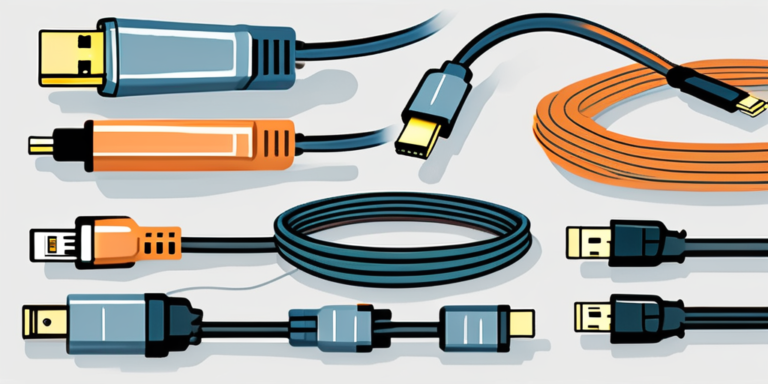Retailers face unique challenges during peak alarm season, when security threats and risks tend to increase. However, by implementing effective strategies, businesses can not only mitigate these risks but also maximize their success during this critical period. In this article, we will explore the top three strategies that retailers can employ to enhance their security, optimize their retail space, empower their team, and create a scalable alarm system for the long-term.
Enhancing Retail Security: The Key to Thriving in Alarm Season
During peak alarm season, retailers need to prioritize their security measures to protect their premises, assets, and customers. A robust security system acts as a deterrent to potential criminals and provides peace of mind to both employees and customers.
One way to enhance retail security is by investing in cutting-edge surveillance technology. High-definition cameras with advanced features, such as facial recognition and motion detection, offer real-time monitoring and can provide crucial evidence in the event of an incident. Additionally, integrating the surveillance system with an alarm system ensures immediate response and quick resolution of potential threats.
Furthermore, implementing access control measures, such as key card systems or biometric authentication, can restrict unauthorized entry and safeguard sensitive areas. Regular security audits and vulnerability assessments help identify weak points and allow for timely corrective actions.
Another important aspect of retail security is the training and education of employees. By providing comprehensive training on security protocols, emergency procedures, and recognizing suspicious behavior, employees become the first line of defense against potential threats. Regular drills and simulations can help reinforce this knowledge and ensure that employees are prepared to handle various security situations.
Moreover, retailers can benefit from establishing strong partnerships with local law enforcement agencies. Collaborating with the police can lead to faster response times in case of emergencies and facilitate the sharing of information on criminal activities in the area. Additionally, retailers can participate in community crime prevention programs, such as neighborhood watch, to create a safer environment for both businesses and residents.
When it comes to physical security, retailers should consider implementing measures such as reinforced doors and windows, secure cash handling procedures, and proper lighting in and around the premises. These measures not only deter potential criminals but also create a sense of safety for customers, encouraging them to visit the store and make purchases.
In addition to these proactive security measures, retailers should also have a well-defined incident response plan in place. This plan should outline the steps to be taken in case of a security breach, including notifying the authorities, contacting security personnel, and communicating with affected customers. Regularly reviewing and updating this plan ensures that it remains effective and relevant.
Lastly, retailers should prioritize cybersecurity to protect their digital assets and customer data. Implementing firewalls, encryption, and secure payment systems can help prevent data breaches and unauthorized access to sensitive information. Regularly updating software and conducting penetration testing can also help identify vulnerabilities and ensure the integrity of the retail system.
Optimizing Your Retail Space: Adapting for Peak Season Challenges
Peak alarm season typically brings an influx of customers, which can put a strain on both the physical space and the workforce. To optimize the retail space during this period, retailers should focus on efficient layout design, product placement, and crowd management.
An effective layout design should facilitate smooth customer flow, reduce bottlenecks, and enhance the overall shopping experience. This can be achieved by strategically placing popular and high-margin items near entry points or checkout counters, creating enticing product displays, and ensuring clear signage for easy navigation. Additionally, dedicated areas for seasonal promotions or limited-time offers can help generate excitement and boost sales.
When it comes to layout design, it’s crucial to consider the psychology of shopping. By understanding customer behavior and preferences, retailers can create a space that encourages exploration and maximizes sales opportunities. For example, placing complementary products together can encourage customers to make additional purchases. Retailers can also utilize technology, such as heat mapping and customer tracking, to analyze customer movement patterns and optimize the placement of products and displays.
Managing increased foot traffic requires effective crowd management techniques. This includes deploying additional staff during peak hours to assist customers, ensuring adequate checkout counters to minimize waiting times, and implementing queue management systems to maintain order and prevent overcrowding. Offering self-checkout options is another way to expedite the purchasing process and reduce customer wait times.
When it comes to crowd management, it’s essential to strike a balance between providing assistance and giving customers space to browse. Overly aggressive sales tactics or constant hovering can make customers feel uncomfortable and may deter them from making purchases. Instead, retailers should train their staff to be attentive, knowledgeable, and available when needed, while also respecting customers’ personal space and shopping preferences.
Furthermore, retailers can leverage technology to streamline crowd management. For instance, digital signage can be used to display real-time wait times or direct customers to less crowded areas of the store. Mobile apps can also be utilized to provide customers with personalized recommendations, virtual maps, and real-time updates on promotions or discounts.
During peak seasons, it’s important to ensure that the workforce is adequately prepared to handle the increased demands. Retailers should provide comprehensive training to employees, equipping them with the necessary knowledge and skills to handle various customer scenarios. This includes training on efficient checkout processes, product knowledge, and conflict resolution techniques.
Additionally, retailers can implement flexible scheduling options to accommodate the fluctuating demands of peak seasons. Offering part-time or temporary positions can help alleviate the strain on existing staff and ensure that there are enough hands-on deck to provide quality customer service.
In conclusion, optimizing retail space during peak seasons requires a holistic approach that encompasses layout design, crowd management, and workforce preparation. By strategically planning the layout, utilizing technology, and training employees, retailers can create an environment that not only accommodates increased foot traffic but also enhances the overall shopping experience for customers.
Empowering Your Team: Essential Training for Peak Alarm Readiness
A well-trained and prepared team is vital during peak alarm season. Retailers should invest in comprehensive training programs to equip their staff with the knowledge and skills required to respond effectively to security incidents.
Training sessions should cover various topics, including emergency protocols, alarm system operation, conflict resolution, and customer interaction. Simulated drills can help employees understand their roles and responsibilities during critical situations and ensure a coordinated response.
During emergency protocol training, employees will learn how to quickly assess a situation and take appropriate action. They will be trained on how to handle different types of alarms, such as fire alarms, intruder alarms, and panic alarms. This training will include step-by-step instructions on how to evacuate the building safely and efficiently, ensuring the well-being of both employees and customers.
Alarm system operation training is crucial to ensure that employees are familiar with the alarm system’s features and functionalities. They will learn how to arm and disarm the system, how to identify false alarms, and how to troubleshoot common issues. This knowledge will enable them to respond promptly and accurately to alarm activations, minimizing the risk of false alarms and ensuring a timely response to genuine security threats.
Conflict resolution training is essential for employees who may encounter difficult or confrontational situations while on duty. They will learn effective communication techniques to de-escalate conflicts and resolve issues peacefully. This training will empower employees to handle challenging customer interactions with professionalism and empathy, maintaining a safe and secure environment for everyone.
Simulated drills play a crucial role in training employees for peak alarm readiness. These drills allow employees to practice their response to different security incidents, such as a break-in or a medical emergency. By simulating these scenarios, employees can gain hands-on experience and develop the necessary skills to handle real-life situations confidently. These drills also provide an opportunity to identify any gaps in the team’s knowledge or procedures and address them proactively.
In addition to training, establishing open lines of communication is essential for a well-prepared team. Regular meetings and feedback sessions allow team members to share their experiences, discuss challenges, and exchange best practices. These sessions also provide an opportunity for management to address any concerns or questions raised by the team and implement necessary improvements to enhance overall alarm readiness.
By investing in comprehensive training programs and fostering open communication, retailers can empower their teams to respond effectively to security incidents during peak alarm season. A well-prepared team not only enhances the safety and security of the retail environment but also instills confidence in both employees and customers.
Creating a Scalable Alarm System for the Long-Term
Peak alarm season is an opportunity for retailers to assess their current alarm system and make necessary upgrades to ensure scalability and long-term effectiveness. An outdated or inadequate system can hinder operations and compromise the security of the retail space.
When evaluating alarm systems, retailers should consider key features such as real-time alerts, remote monitoring capability, mobile access, and the ability to integrate with other security systems. Scalability and flexibility are also critical factors, as businesses may expand or undergo changes in the long run.
Engaging with a professional security provider can be beneficial, as they can offer expert advice and tailor-made solutions based on the specific requirements of the retail business. Regular maintenance and system upgrades should also be part of the long-term plan to ensure optimal performance and reliability.
By implementing these top three strategies – enhancing retail security, optimizing the retail space, and empowering the team – retailers can maximize their success during peak alarm season. Prioritizing security, efficiently managing the influx of customers, and investing in long-term alarm system solutions will not only provide a safer environment but also help retailers thrive in this critical period.






